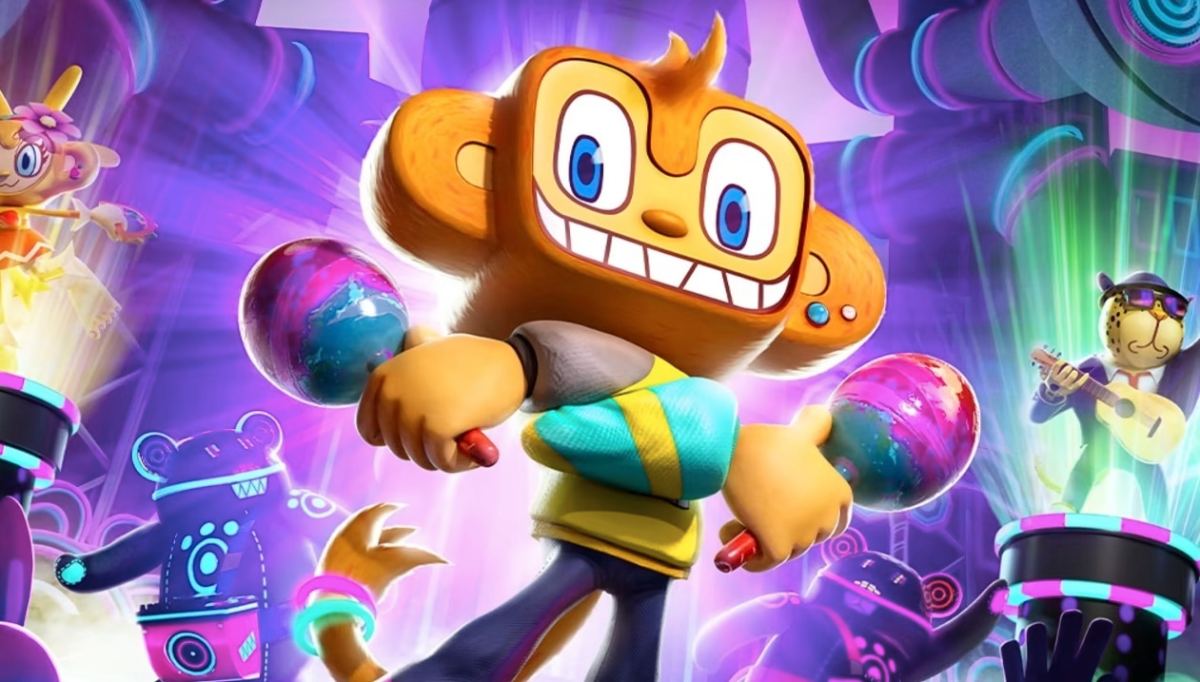The cult favourite Dreamcast rhythm game Samba de Amigo was miraculously revived in mid-2023, as Sega brought the joyful, maraca-shaking monkey mascot Amigo back to get another shot in the spotlight. But confusingly enough, Amigo’s return is split across three similar, but slightly different game releases: Samba de Amigo: Party Central for
Each has the same core gameplay, but also boasts its own feature set unique to the edition. The Meta Quest VR version features a more Beat Saber-like experience, Party Central features competitive dance battles and party mini-games on top of its motion controls, and Party-to-Go features touchscreen rhythm gameplay instead, as well as an exclusive story mode.

I’m someone who feverously devoured quirky, character-focussed rhythm action games of all kinds in the late 1990s and early 2000s – the era that gave birth to the original Samba de Amigo arise, as well as its memorable contemporaries that were positively bursting with personality – Parappa the Rapper, Gitaroo Man, Space Channel 5, Osu! Takatae! Ouendan!, among others. So needless to say, I’ve found a lot to love about the Apple Arcade version of Samba de Amigo – Party-to-Go.
The exclusive story mode tells the tale of Amigo being launched into space after a bombastic performance, but upon crashing back down again, he discovers that five years have passed, and that all music on earth has been outlawed. Most of the narrative is delivered through conversations over a text-chat-like interface, with occasional full-motion video cutscenes to depict major plot points. Also, one of the characters is a giant maraca.
It’s simple and silly, but it serves as a great vehicle in giving you a reason to play through all of the game’s 40+ songs, with a very gradual difficulty curve to get you accustomed to reading the note chart, learning all the different mechanics, and just getting better at the game over time – something that’s hard to curate yourself through the standard quick play mode.
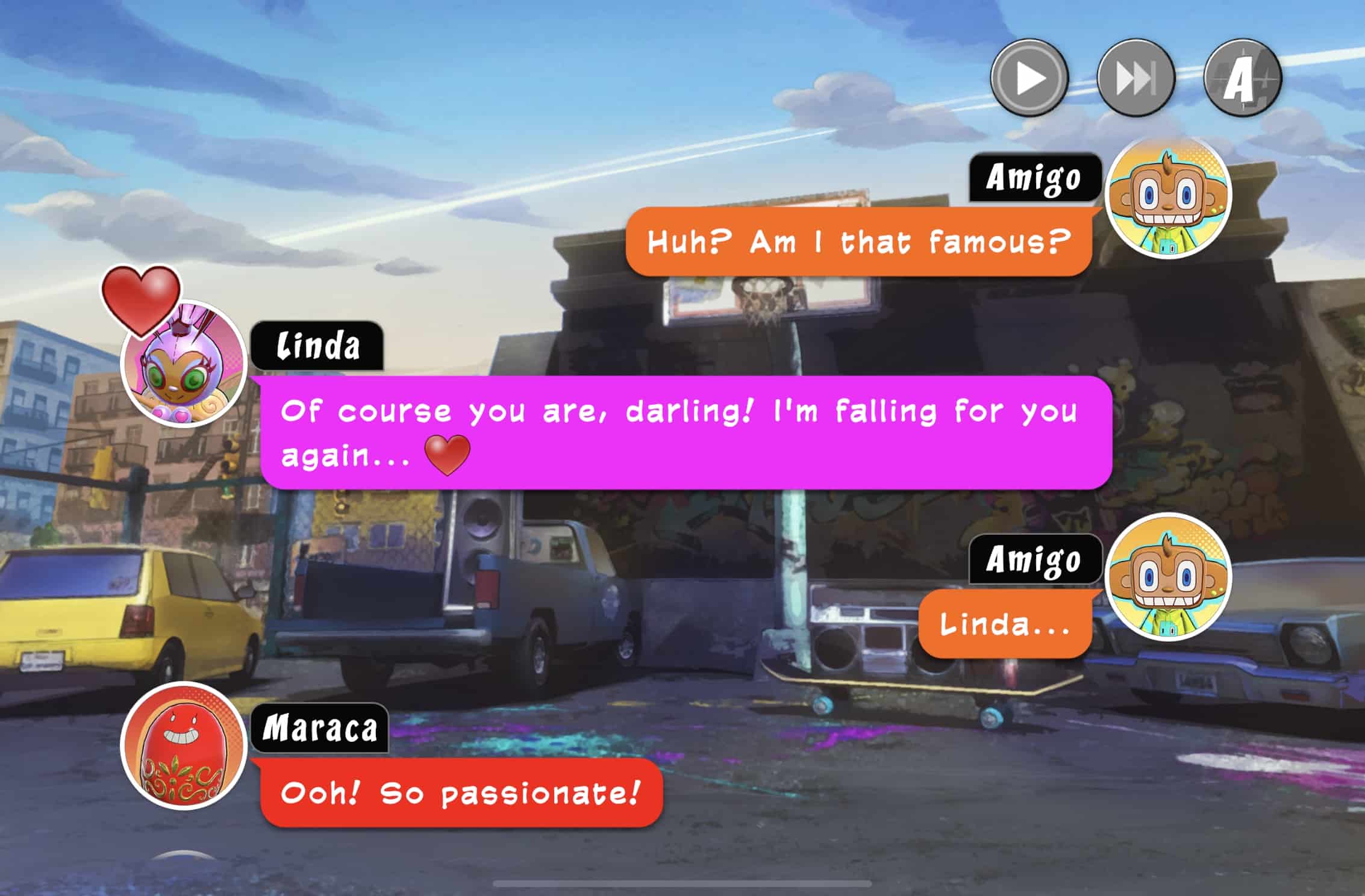
The goofy story is also a throwback to something all those aforementioned rhythm games of the early 2000s shared, and it’s where all the colour and personality of the memorable, wacky musical world is found. I’ve been having an excellent time working my way through Samba de Amigo: Party-to-Go. This particular genre revival has me beaming.
The World Needs Fun
The whole 2000s revival movement hasn’t been lost on Sega either, who recently made it sound like this is exactly the reason why the property has made a return.
“I also felt that revival boom,” said Shun Nakamura, director of both the original and new Samba de Amigo games, as well as other Sega cult classics like Billy Hatcher and the Giant Egg, Rhythm Thief & the Emperor’s Treasure, and the the arguably misunderstood Sonic the Hedgehog (2006).
“And when I thought about what games I developed that would be suitable and still fun to play today, Samba de Amigo immediately came into my mind.”
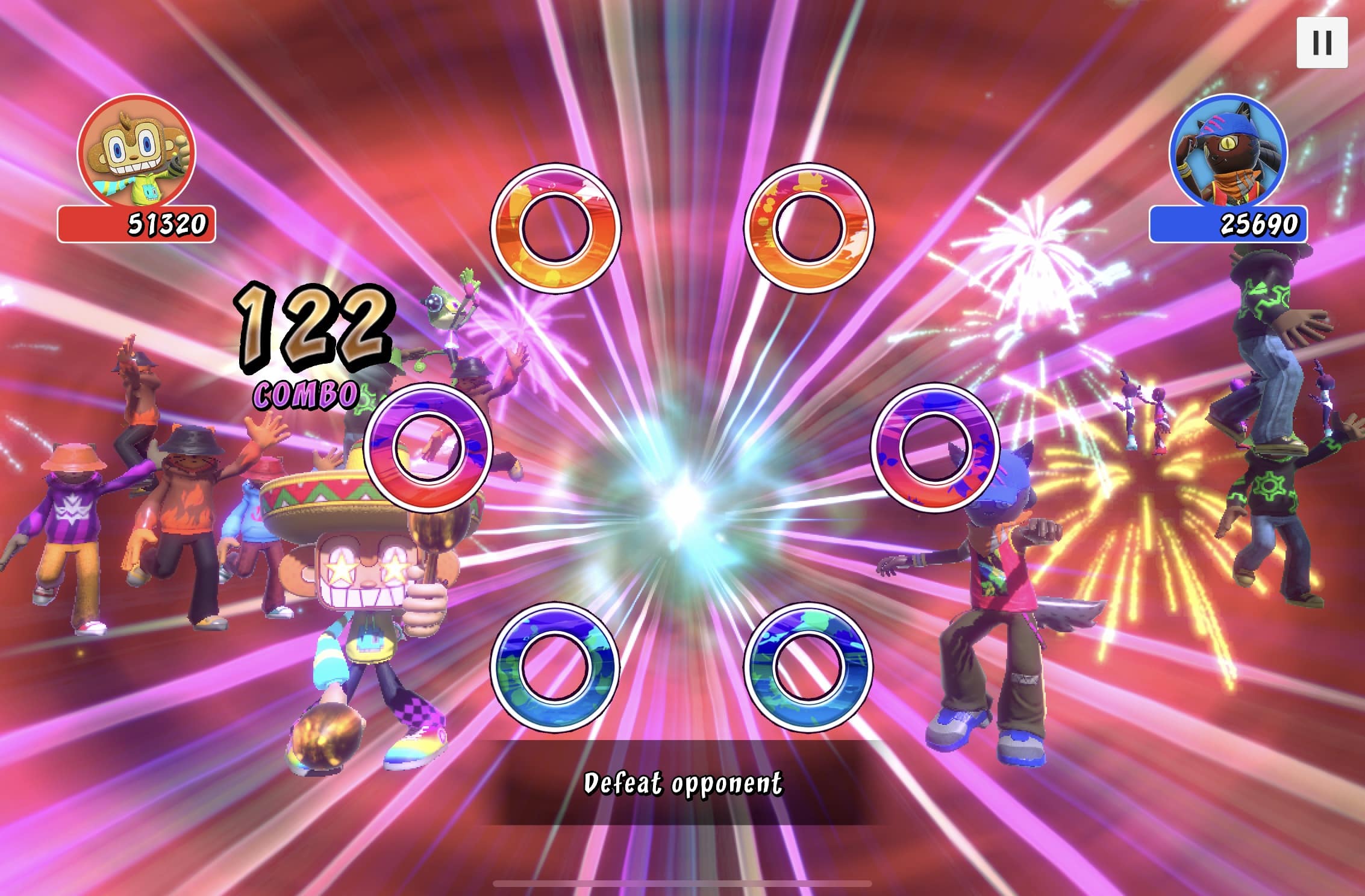
“I think nowadays we have a lot of games many different kinds of genres, but mostly there are games where you have to put all your effort in and play hard, and not so many where you can enjoy it as a fun, silly, funny game with a lot of other friends.”
“But I think this concept of silly fun is still something that, even when times change, can be enjoyed today. So I asked my boss if I could make a reboot of Samba de Amigo because I thought it would be really great to have it in our times. I’m really grateful that I was allowed to develop it again.”
The inherent nature of a maraca-wielding monkey shaking it to Latin and pop songs is joyful, but the story mode goes a few more steps beyond to tell a ridiculous but sincere tale about love, joy, movement, and music. Which makes the mode’s absence on the
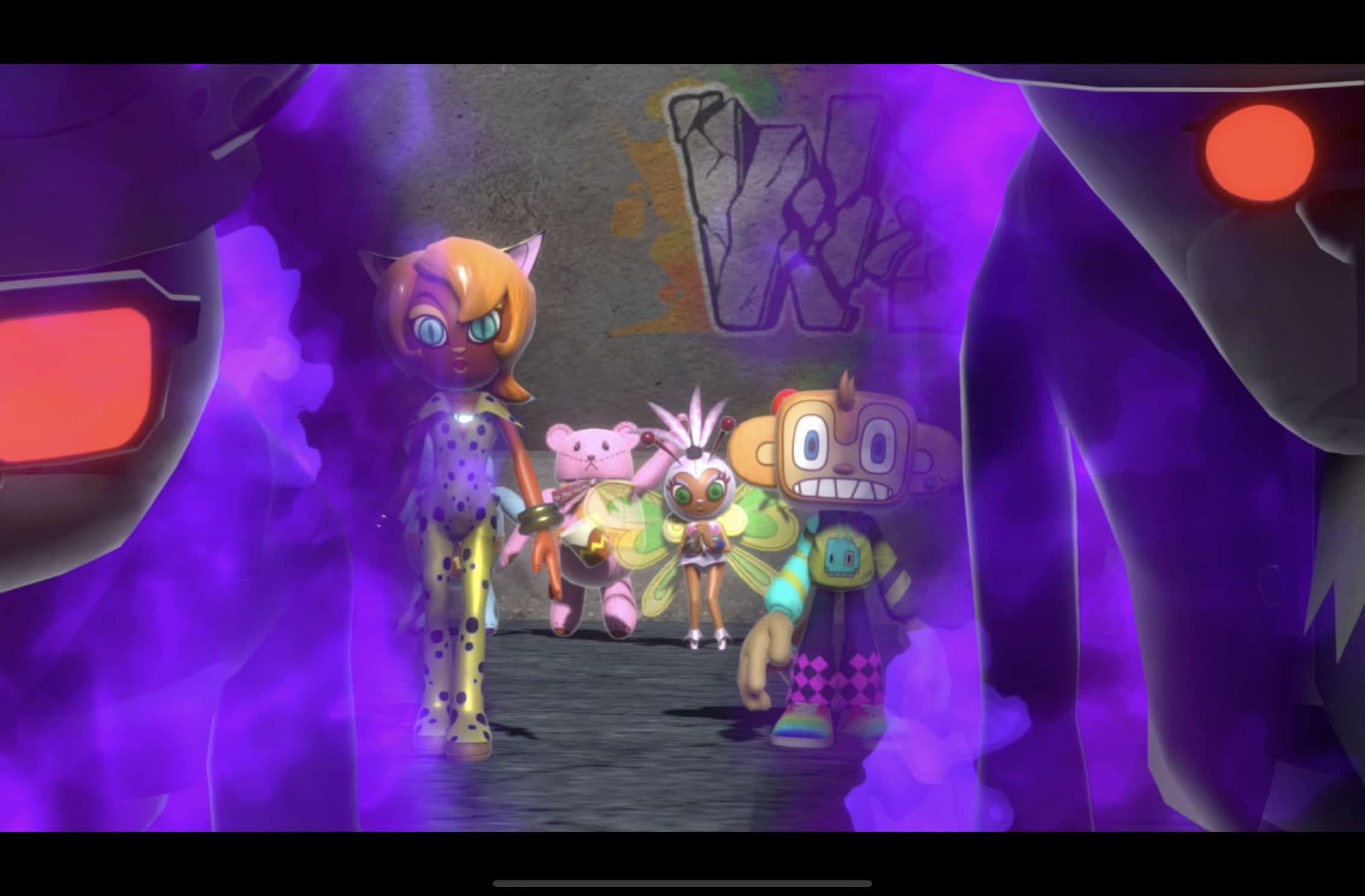
Samba de Amigo: Party Central on
I asked Nakamura about the reasoning behind this decision, which seemingly boiled down to ideal audiences for each platform, business decisions, and wanting to make each version distinct and enticing, even if you already owned one version of the game.
“We tried to think of the specifics and characteristics of each platform that were most unique, and also suitable for exclusive modes,” he said.
“Of course, it would have also been possible to have a story mode for
Of course, becoming invested in a longer game on services like
“On the other hand, for
Touch the Beat
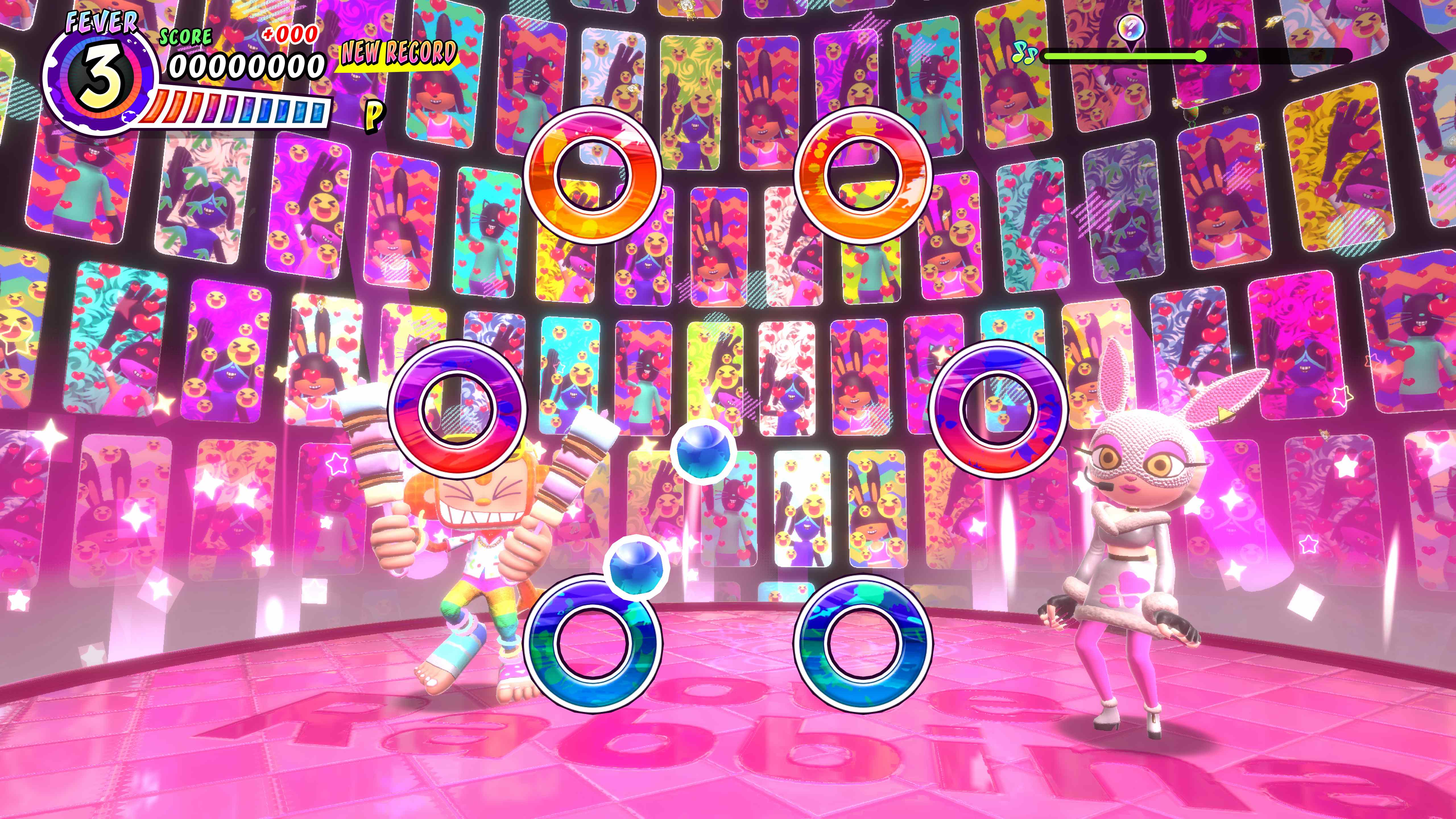
Another potential reason behind the differences in modes is in the style of input. Where the
Though you can play Samba de Amigo: Party-to-Go on a Mac computer or
As GamesHub’s Leah Williams discovered in her review of Samba de Amigo: Party Central, the physical toll that the motion control scheme takes can be a lot – perhaps far more than is reasonable for a long story mode. With that in mind, it makes sense to imagine that short-burst game modes are better suited to it.
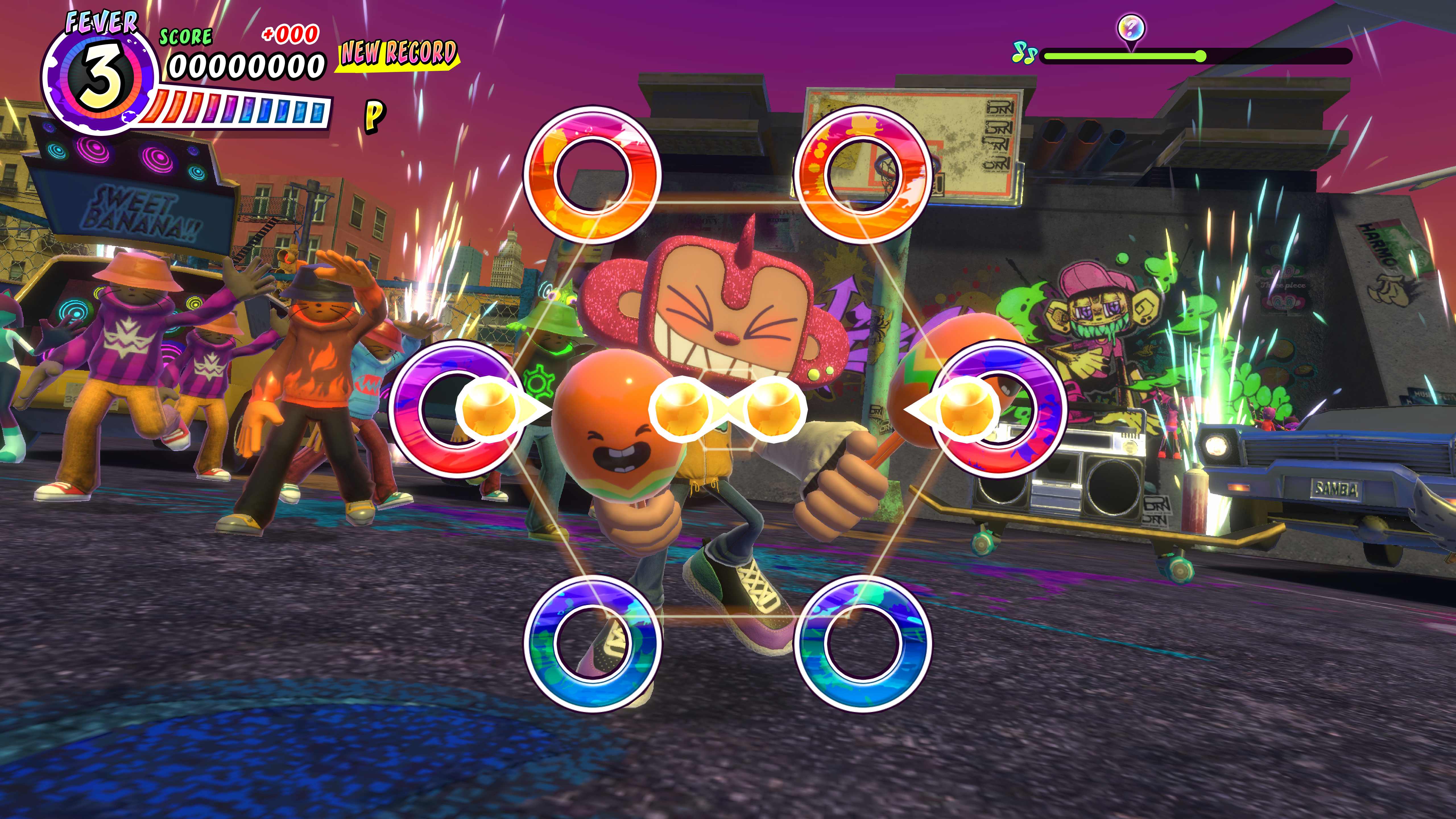
But for a person like me who takes rhythm games a bit too seriously, striving to earn full combos and high scores, the fact that the accuracy of the motion controls in Party Central was a bugbear for Leah ultimately makes me think that actually, the
Of course, none of this really addresses the idea that people on all platforms play games in different ways. There’s no reason why you can’t have a long single-player mode on the
If Samba de Amigo is indeed a case of business needs informing design, it feels a little unfair.
But after decades of very few new entries in the character-rhythm-action game genre, perhaps three slightly different Samba de Amigo games are better than none. And hopefully this is just the beginning, because Nakamura is right – these kinds of goofy, silly games are exactly what we need in these modern times.
Samba de Amigo: Party-to-Go is available on iOS, Mac, and
Quoted interview snippets are based on answers translated into English from Japanese, and have been lightly edited for clarity. GamesHub has affiliate partnerships. These do not influence editorial content. GamesHub may earn a small percentage of commission for products purchased via affiliate links.
